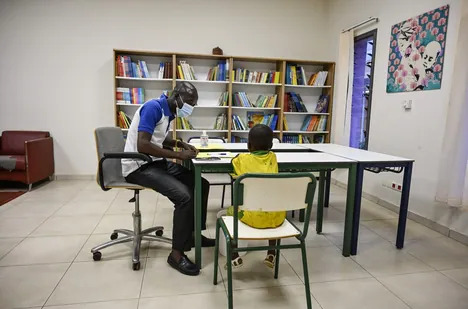
According to a new report by the International Labour Organization (ILO) and Unicef, child labour has increased to 160 million children worldwide, an increase of 8.4 million children in the last four years, with millions more at risk due to the effects of Covid-19.
“Child Labour: Global Estimates 2020, Trends, and the Road Forward” warns that progress to end child labour has stalled for the first time in 20 years, reversing a previous downward trend that saw child labour fall by 94 million between 2000 and 2016.
“In the fight against child labour, we’re losing ground, and the last year hasn’t helped matters. Families are being forced to make difficult decisions as we enter the second year of global lockdowns, school closures, economic disruptions, and shrinking national budgets “Henrietta Fore, the executive director of Unicef, said in a statement.
Saturday is World Day Against Child Labor, and the United Nations has designated 2021 as the International Year for the Elimination of Child Labor, with a goal of ending the practise by 2025.
Here’s what the child labour report said:
- The number of children aged 5 to 11 years who work as children has increased dramatically, accounting for just over half of the total global figure.
- Since 2016, the number of children aged 5 to 17 working in hazardous conditions has increased by 6.5 million to 79 million.
- Over the last four years, population growth, recurring crises, extreme poverty, and insufficient social protection measures in Sub-Saharan Africa have resulted in an additional 16.6 million children being forced into child labour.
- As a result of the Covid-19 pandemic, nine million more children are at risk of being forced into child labour by the end of 2022.
- According to a simulation model, if they do not have access to critical social protection coverage, this number could rise to 46 million.
- Additional economic shocks and school closures caused by Covid-19 may cause children already in child labour to work longer hours or in worsening conditions.
- Due to job and income losses among vulnerable families, many more children may be forced into the worst forms of child labour.
- The agriculture sector accounts for 70% of children in child labour (112 million), followed by 20% in services (31.4 million), and 10% in industry (16.5 million).
- In child labour, nearly 28% of children aged 5 to 11 years and 35% of children aged 12 to 14 years are out of school.
- At every age, boys are more likely than girls to work as children. When household chores are factored in for at least 21 hours per week, the gender gap in child labour narrows.
The ILO and Unicef are calling for adequate social protection for all, including universal child benefits, to reverse the upward trend in child labour. They’ve also called for more money to be spent on free, high-quality education and for all children, including those who dropped out before Covid-19, to return to school.
The global bodies there should be a promotion of decent work for adults so that families don’t have to resort to children helping to generate income. The ILO and Unicef said there should be an end to harmful gender norms and discrimination that influence child labour. Investment in child protection systems, agricultural development, rural public services, infrastructure and livelihoods should also come through, they said.




